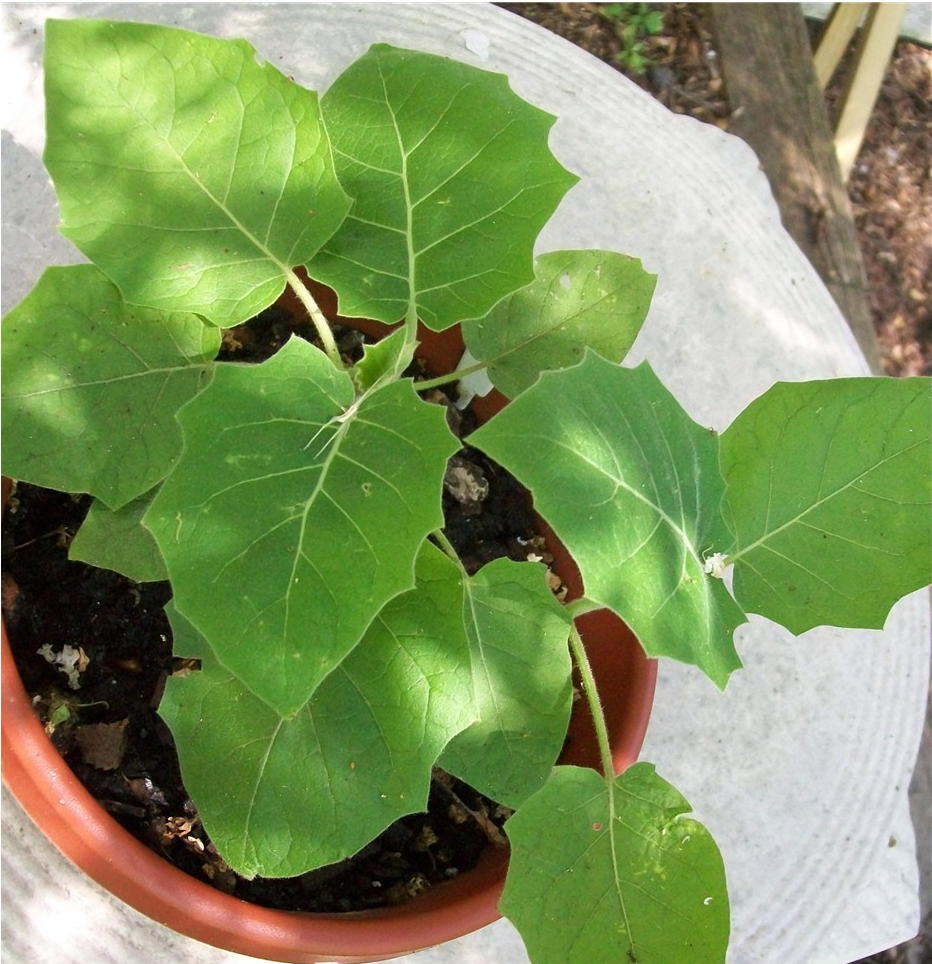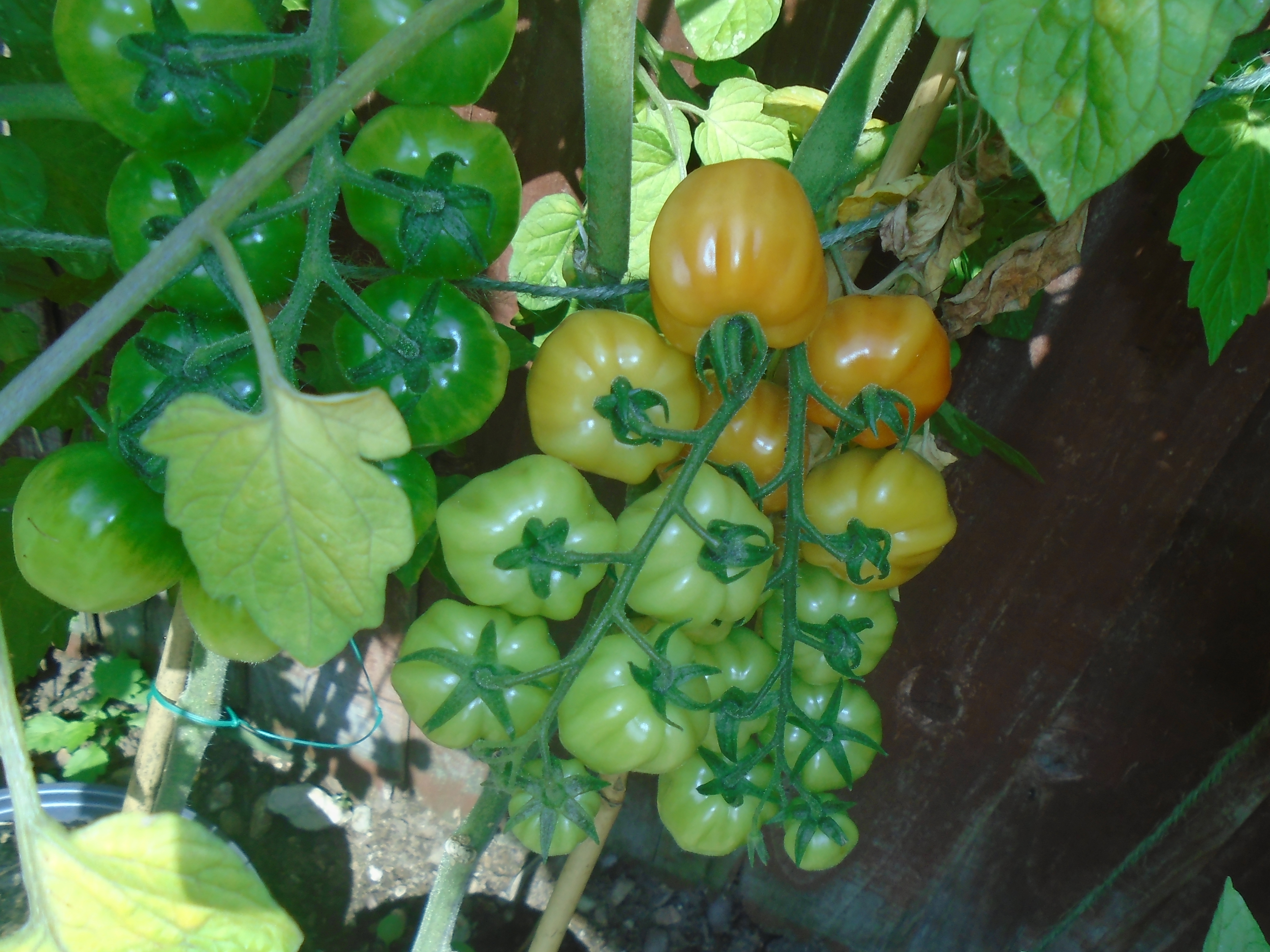|
Naranjilla
''Solanum quitoense'', known as naranjilla (, "little orange") in Ecuador, Costa Rica, and Panama and as lulo (, from Quechua) in Colombia, is a tropical perennial plant from northwestern South America. The specific name for this species of nightshade means "from Quito." The lulo plant has large elongated heart- or oval-shaped leaves up to 45 cm in length. The leaves and stems of the plant are covered in short purple hairs. Naranjilla are delicate plants and must be protected from strong winds and direct sunlight. They grow best in partial shade. The fruit has a citrus flavour, sometimes described as a combination of rhubarb and lime. The juice of the naranjilla is green and is often used as a juice or for a drink called lulada. Classification Within the genus ''Solanum'', ''S. quitoense'' is a part of the subgenus ''Leptostemonum''. Within this clade, ''S. quitoense'' belongs to the section ''Lasiocarpa''. Other species within ''Lasiocarpa'' include ''S. candidum'', ''S. ... [...More Info...] [...Related Items...] OR: [Wikipedia] [Google] [Baidu] |
Vascular Wilt In Lulo (Solanum Quitoense)
Vascular wilt in the perennial shrub ''lulo'' or ''naranjilla'' (''Solanum quitoense'') is a disease caused by the fungus ''Fusarium oxysporum'' f. sp. ''quitoense''. Host Lulo or naranjilla (''Solanum quitoense'') is a perennial shrub whose fruit is an important input for production of fresh juice in Colombia, Ecuador, and other Latin American countries. Lulo is highly profitable for small-scale farmers and its production reached more than 3800 ha in Colombia in 2013 and 5000 ha in Ecuador in 2010. This crop has been considered as very promising for export markets since the 1970s but problems of low productivity and susceptibility to many diseases have limited its potential. Symptoms Diseased plants are easily distinguishable due to their flaccid and chlorotic appearance. Flaccidity and chlorosis start in the lower regions of the plant and progressively move upwards causing wilt of the entire plant. In later stages of disease development, progressive defoliation oc ... [...More Info...] [...Related Items...] OR: [Wikipedia] [Google] [Baidu] |
Solanum Sessiliflorum
''Solanum sessiliflorum'', the cocona, is a tropical shrub of the family Solanaceae. The cocona plant has sturdy branches and huge, serrate and hairy leaves. Cocona closely resembles a number of close relatives, including naranjilla and pseudolulo. It can be distinguished from those plants by its lack of spines. It will hybridize with those and other close relatives. Cocona also lacks the characteristic purple coloring usually seen in the naranjilla. Its flowers resemble large potato flowers, with light green petals. Cocona is harvested in parts of South America around the Amazon rainforest such as Purús Province in eastern Peru. :es:Palestina (Perú) The fruit of cocona is a red, orange or yellow edible berry. Cocona is native to the Andean region of South America, where it is occasionally cultivated for human consumption. Cocona can also be grown as an indoor ornamental plant in temperate climates, but it seems to be quite sensitive to spider mites, so care should be ... [...More Info...] [...Related Items...] OR: [Wikipedia] [Google] [Baidu] |
Solanum Quitoense Unripe Fruit Flesh
''Solanum'' is a large and diverse genus of flowering plants, which include three food crops of high economic importance: the potato, the tomato and the eggplant (aubergine, brinjal). It is the largest genus in the nightshade family Solanaceae, comprising around 1,500 species. It also contains the so-called horse nettles (unrelated to the genus of true nettles, ''Urtica''), as well as numerous plants cultivated for their ornamental flowers and fruit. ''Solanum'' species show a wide range of growth habits, such as annuals and perennials, vines, subshrubs, shrubs, and small trees. Many formerly independent genera like ''Lycopersicon'' (the tomatoes) and ''Cyphomandra'' are now included in ''Solanum'' as subgenera or sections. Thus, the genus today contains roughly 1,500–2,000 species. Name The generic name was first used by Pliny the Elder (AD 23–79) for a plant also known as , most likely ''S. nigrum''. Its derivation is uncertain, possibly stemming from the Latin word , m ... [...More Info...] [...Related Items...] OR: [Wikipedia] [Google] [Baidu] |
Solanum
''Solanum'' is a large and diverse genus of flowering plants, which include three food crops of high economic importance: the potato, the tomato and the eggplant (aubergine, brinjal). It is the largest genus in the nightshade family Solanaceae, comprising around 1,500 species. It also contains the so-called horse nettles (unrelated to the genus of true nettles, '' Urtica''), as well as numerous plants cultivated for their ornamental flowers and fruit. ''Solanum'' species show a wide range of growth habits, such as annuals and perennials, vines, subshrubs, shrubs, and small trees. Many formerly independent genera like '' Lycopersicon'' (the tomatoes) and '' Cyphomandra'' are now included in ''Solanum'' as subgenera or sections. Thus, the genus today contains roughly 1,500–2,000 species. Name The generic name was first used by Pliny the Elder (AD 23–79) for a plant also known as , most likely ''S. nigrum''. Its derivation is uncertain, possibly stemming from the Latin w ... [...More Info...] [...Related Items...] OR: [Wikipedia] [Google] [Baidu] |
Solanum Quitoense Flower 5
''Solanum'' is a large and diverse genus of flowering plants, which include three food crops of high economic importance: the potato, the tomato and the eggplant (aubergine, brinjal). It is the largest genus in the nightshade family Solanaceae, comprising around 1,500 species. It also contains the so-called horse nettles (unrelated to the genus of true nettles, '' Urtica''), as well as numerous plants cultivated for their ornamental flowers and fruit. ''Solanum'' species show a wide range of growth habits, such as annuals and perennials, vines, subshrubs, shrubs, and small trees. Many formerly independent genera like '' Lycopersicon'' (the tomatoes) and '' Cyphomandra'' are now included in ''Solanum'' as subgenera or sections. Thus, the genus today contains roughly 1,500–2,000 species. Name The generic name was first used by Pliny the Elder (AD 23–79) for a plant also known as , most likely ''S. nigrum''. Its derivation is uncertain, possibly stemming from the ... [...More Info...] [...Related Items...] OR: [Wikipedia] [Google] [Baidu] |
Lulada
Lulada is a traditional Colombian beverage from Cali, in the Valle del Cauca Department of Colombia. It is prepared from lulo, a fruit common to the region, lime juice, water, and sugar for sweetness. It often has the texture and consistency of a smoothie and is sometimes served with a shot of aguardiente. A lulada differs from the standard lulo juice in that the lulo fruit is not blended during the drink's preparation. See also * Aguapanela Aguapanela, '' agua de panela'' or ''agüepanela'' is a drink commonly found throughout South America and a few parts of Central America and Caribbean. Its literal translation means "panela water" as it is an infusion made from panela which is der ... References Colombian cuisine {{drink-stub ... [...More Info...] [...Related Items...] OR: [Wikipedia] [Google] [Baidu] |
Solanum Lasiocarpum
''Solanum lasiocarpum'', synonym ''Solanum ferox'' L., otherwise known as Indian nightshade or hairy-fruited eggplant, is a plant that produces edible fruit. Its flowers are white and its fruits are pale yellow. ''S. lasiocarpum'' is found wild in parts of temperate and tropical Asia: the Andaman Islands, Sri Lanka, Indochina, south China, Taiwan, much of Malesia, Papuasia and Queensland, Australia. In other countries it is primarily known as a domesticated plant. Domesticated plants bear larger fruits and lack the prickly skin that is found in the wild plants. The color found in the center of fruit is light green, like that of ''Solanum quitoense''. It's cultivated in tropical Asia, used in food additives for flavoring, and given to the sick as a folk medicine Traditional medicine (also known as indigenous medicine or folk medicine) comprises medical aspects of traditional knowledge that developed over generations within the folk beliefs of various societies, including ind ... [...More Info...] [...Related Items...] OR: [Wikipedia] [Google] [Baidu] |
The Ripe Fruit Flesh
''The'' () is a grammatical article in English, denoting persons or things that are already or about to be mentioned, under discussion, implied or otherwise presumed familiar to listeners, readers, or speakers. It is the definite article in English. ''The'' is the most frequently used word in the English language; studies and analyses of texts have found it to account for seven percent of all printed English-language words. It is derived from gendered articles in Old English which combined in Middle English and now has a single form used with nouns of any gender. The word can be used with both singular and plural nouns, and with a noun that starts with any letter. This is different from many other languages, which have different forms of the definite article for different genders or numbers. Pronunciation In most dialects, "the" is pronounced as (with the voiced dental fricative followed by a schwa) when followed by a consonant sound, and as (homophone of the archaic pr ... [...More Info...] [...Related Items...] OR: [Wikipedia] [Google] [Baidu] |
Costa Rican
Costa Rica (, ; ; literally "Rich Coast"), officially the Republic of Costa Rica ( es, República de Costa Rica), is a country in the Central American region of North America, bordered by Nicaragua to the north, the Caribbean Sea to the northeast, Panama to the southeast, the Pacific Ocean to the southwest, and maritime border with Ecuador to the south of Cocos Island. It has a population of around five million in a land area of . An estimated 333,980 people live in the capital and largest city, San José, with around two million people in the surrounding metropolitan area. The sovereign state is a unitary presidential constitutional republic. It has a long-standing and stable democracy and a highly educated workforce. The country spends roughly 6.9% of its budget (2016) on education, compared to a global average of 4.4%. Its economy, once heavily dependent on agriculture, has diversified to include sectors such as finance, corporate services for foreign companies, phar ... [...More Info...] [...Related Items...] OR: [Wikipedia] [Google] [Baidu] |
Infection
An infection is the invasion of tissues by pathogens, their multiplication, and the reaction of host tissues to the infectious agent and the toxins they produce. An infectious disease, also known as a transmissible disease or communicable disease, is an illness resulting from an infection. Infections can be caused by a wide range of pathogens, most prominently bacteria and viruses. Hosts can fight infections using their immune system. Mammalian hosts react to infections with an innate response, often involving inflammation, followed by an adaptive response. Specific medications used to treat infections include antibiotics, antivirals, antifungals, antiprotozoals, and antihelminthics. Infectious diseases resulted in 9.2 million deaths in 2013 (about 17% of all deaths). The branch of medicine that focuses on infections is referred to as infectious disease. Types Infections are caused by infectious agents ( pathogens) including: * Bacteria (e.g. ''Mycobacterium tube ... [...More Info...] [...Related Items...] OR: [Wikipedia] [Google] [Baidu] |
Julia Morton
Julia Frances McHugh Morton (April 25, 1912 – September 10, 1996) was an American author and botanist. She was research professor of biology, and director of the Morton Collectanea at the University of Miami. She was elected a Fellow of the Linnean Society of London in 1974. Well known as a lecturer on toxic, edible and otherwise useful plants, she wrote 10 books and 94 scientific papers, and contributed to an additional 12 books and 27 papers. Early life Morton was born Julia Francis McHugh, on April 25, 1912 in Middlebury, Vermont, and grew up on a farm in rural Vermont where she was interested in agriculture, the outdoors, and natural resources. At the age of 15, her mother and sister died, and she went to New York City to live with her brother. She worked as a commercial artist for several years and married Kendal Paul Morton (1897–1964), a Canadian. By 1933 they had begun work on collating information on food, medicinal, and other useful plants. They assembled ... [...More Info...] [...Related Items...] OR: [Wikipedia] [Google] [Baidu] |




.jpg)
.png)
